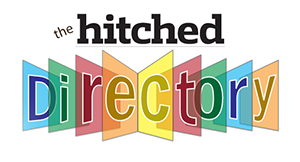entertains, educates & inspires marriages
Find Marriage Answers
health
Why We Need to Expand Our Language of the BreastThe breast literally holds the toxins of our environment—and we need to talk about it.

Julia Caesar
The environment and the toxins within it show up in breast milk and can get passed on to progeny.
“ Rarely do we consider the organ itself and its make up as a part of our biology.”
|
"Our two greatest challenges are figuring out better treatments for the 40,000 women who die of breast cancer every year, and at same time, figure out who, on the other end of the spectrum, is getting exposed to needless toxicity." ~ Dr. Eric Winer
The human breast is a beautiful adaptation, which is singular in the animal world. While other mammals only have enlarged breasts during nursing, humans have breasts that are large throughout life; they have become increasingly larger at increasingly younger ages. The standard breast talk circles around the focus of erotic visual fantasy and, in terms of innate function, as the source of nurturance for our progeny. Rarely do we consider the organ itself and its make up as a part of our biology.
Our breasts are glands made of fatty tissues that absorb toxins like a soft pair of sponges or as Florence Williams describes them in her 2012 expose investigation into our breasts, "Malignancies that are waiting to happen." And happening they are. While many are aware that breast cancer has doubled worldwide since 1940, what remains unknown is that it turns out not all breast cancers are created equal and, for that matter, have vastly different outcomes.
About 40,000 women die of breast cancer annually, a number that has remained consistent for the last 15 years and which amounts to 3% of the cause of death for women. But many more than that are diagnosed and go through extensive treatment, some now arguing overly treated for early stage cancer that runs a completely different course. Recent research has shown that 20-25% of detected cancers are termed DCIS (ductal carcinoma in situ), which are early stage and are generally indolent tumors found in milk ducts. Mortality risk for this kind of cancer is 3%, the same as the general population—and more important, women with this type of early stage cancer generally do not benefit from chemo. This type of breast cancer is worlds away from the terrifying masses that can grow to lethal sizes before they are detected, and doctors are working to figure out how to both identify these differences early and come up with better treatments for both.
Historically, and even today, there has been little distinction offered between the types of cancer a woman has and its outcomes, so all women would undergo the same intensity of treatment, including invasive and often multiple surgery, chemo and radiation. As any woman who undergoes this treatment protocol will share, the treatment itself carries huge amounts of collateral damage to every system in the body. And while these treatments are warranted for certain types of lethal breast cancer, for others, these life-sapping treatments do more harm than good. The challenge for doctors is learning the difference and expanding the dialogue so that not all breast cancer diagnosis carry the same urgent red flag.
It could be that expanding our understanding about our breasts and what they are holding should be starting way earlier, before cancer is detected or even has had a chance to grow. Florence Williams was shocked into studying the subject, not through a breast cancer diagnosis, but through a typical screening of her own breast milk. Her breast milk, like most other women in our culture have become holding tanks for all types of nasty chemicals from paint thinners, wood preservatives, cosmetic additives, to rocket fuel and more. It isn’t hard to imagine how these toxic chemicals create cancer over time, and more frightening still, of how we are transferring them along to our progeny while we are nursing them.
These toxins have been found to create childhood cancers, compromised immune function, lower IQs and behavioral issues. Our breasts have become the truest embodiment of the destruction we have wreaked on our environment. So now that we are expanding the conversation and our understanding of the vastly different types of breast cancer and looking to find more appropriate treatments for both, lets also seriously look at how to protect our breasts and our progeny by reducing the risk of breast cancer before it happens by better regulating our exposure to the toxins that our breasts are holding.
Wendy Strgar, founder and CEO of Good Clean Love, is a loveologist who writes and lectures on Making Love Sustainable, a green philosophy of relationships which teaches the importance of valuing the renewable resources of love, intimacy and family. In her new book, "Love that Works: A Guide to Enduring Intimacy," she tackles the challenging issues of sustaining relationships and healthy intimacy with an authentic and disarming style and simple yet innovative advice. It has been called "the essential guide for relationships." The book is available on ebook. Wendy has been married for over 30 years to her husband, a psychiatrist, has four children and lives in the beautiful Pacific Northwest.
The human breast is a beautiful adaptation, which is singular in the animal world. While other mammals only have enlarged breasts during nursing, humans have breasts that are large throughout life; they have become increasingly larger at increasingly younger ages. The standard breast talk circles around the focus of erotic visual fantasy and, in terms of innate function, as the source of nurturance for our progeny. Rarely do we consider the organ itself and its make up as a part of our biology.
Our breasts are glands made of fatty tissues that absorb toxins like a soft pair of sponges or as Florence Williams describes them in her 2012 expose investigation into our breasts, "Malignancies that are waiting to happen." And happening they are. While many are aware that breast cancer has doubled worldwide since 1940, what remains unknown is that it turns out not all breast cancers are created equal and, for that matter, have vastly different outcomes.
About 40,000 women die of breast cancer annually, a number that has remained consistent for the last 15 years and which amounts to 3% of the cause of death for women. But many more than that are diagnosed and go through extensive treatment, some now arguing overly treated for early stage cancer that runs a completely different course. Recent research has shown that 20-25% of detected cancers are termed DCIS (ductal carcinoma in situ), which are early stage and are generally indolent tumors found in milk ducts. Mortality risk for this kind of cancer is 3%, the same as the general population—and more important, women with this type of early stage cancer generally do not benefit from chemo. This type of breast cancer is worlds away from the terrifying masses that can grow to lethal sizes before they are detected, and doctors are working to figure out how to both identify these differences early and come up with better treatments for both.
Historically, and even today, there has been little distinction offered between the types of cancer a woman has and its outcomes, so all women would undergo the same intensity of treatment, including invasive and often multiple surgery, chemo and radiation. As any woman who undergoes this treatment protocol will share, the treatment itself carries huge amounts of collateral damage to every system in the body. And while these treatments are warranted for certain types of lethal breast cancer, for others, these life-sapping treatments do more harm than good. The challenge for doctors is learning the difference and expanding the dialogue so that not all breast cancer diagnosis carry the same urgent red flag.
It could be that expanding our understanding about our breasts and what they are holding should be starting way earlier, before cancer is detected or even has had a chance to grow. Florence Williams was shocked into studying the subject, not through a breast cancer diagnosis, but through a typical screening of her own breast milk. Her breast milk, like most other women in our culture have become holding tanks for all types of nasty chemicals from paint thinners, wood preservatives, cosmetic additives, to rocket fuel and more. It isn’t hard to imagine how these toxic chemicals create cancer over time, and more frightening still, of how we are transferring them along to our progeny while we are nursing them.
These toxins have been found to create childhood cancers, compromised immune function, lower IQs and behavioral issues. Our breasts have become the truest embodiment of the destruction we have wreaked on our environment. So now that we are expanding the conversation and our understanding of the vastly different types of breast cancer and looking to find more appropriate treatments for both, lets also seriously look at how to protect our breasts and our progeny by reducing the risk of breast cancer before it happens by better regulating our exposure to the toxins that our breasts are holding.
Wendy Strgar, founder and CEO of Good Clean Love, is a loveologist who writes and lectures on Making Love Sustainable, a green philosophy of relationships which teaches the importance of valuing the renewable resources of love, intimacy and family. In her new book, "Love that Works: A Guide to Enduring Intimacy," she tackles the challenging issues of sustaining relationships and healthy intimacy with an authentic and disarming style and simple yet innovative advice. It has been called "the essential guide for relationships." The book is available on ebook. Wendy has been married for over 30 years to her husband, a psychiatrist, has four children and lives in the beautiful Pacific Northwest.
Leave a Comment
|
|
|
|
threshold | life | money | sex | blog | married life social network | partners | directory | wine club | podcasts | newsletters | subscribe | advertise | contact us | press releases | archives | privacy policy
Copyright © 2023 Hitched Media, Inc. All rights reserved. | hitched - entertains, educates & inspires marriages |


